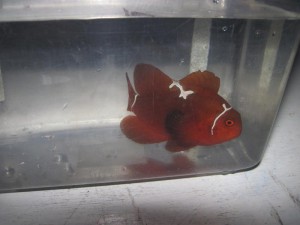Tag Archives: news
Lightning clownfish fry
It is a big day for all clownfish lovers and especially those who hope to keep a lightning clownfish sometimes in the future. Not too long ago we reported on what ultimately turned out to be a failed spawning of the Lightning clownfish. Well a few days ago the pair spawned again and this time they didn’t eat their eggs. A few hours ago the first eggs hatched and the remaining ones where moved to a dedicated Black Round Tub for artificial hatching. There are still some challenges before we get to see lightning clownfish fry and there is no guarantee that the pair will produce Lightning clownfish fry but with a little bit of luck we will see lightning patterned fry before we know it that can be passed on to other breeders that can help this wonderful type of PNG clownfish spread in the hobby.
Go to lightning-maroon-clownfish.com/ for the latest news about the fry and the breeding efforts. You can see the hatching announcement here.
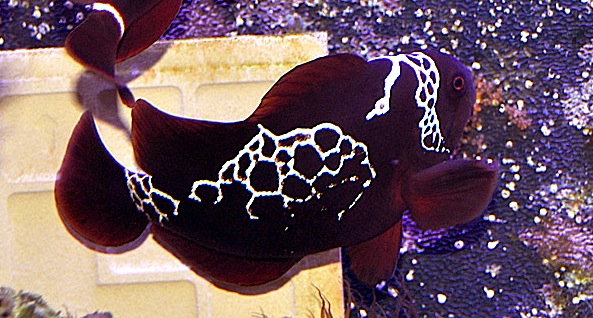
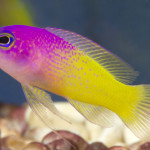
Bicolor basslet, Lipogramma klayi, bred by Todd Gardner
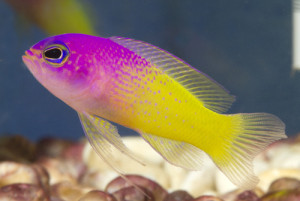 Todd Gardner at the Long Island Aquarium has added another first to the long list of species that was first bred at the aquarium. Todd successfully breeds and raised the larvae of the expensive deep water bicolor basslet, Lipogramma klayi. The stunning fish has been dropping in price over the last few years and can now be bought for under USD1000.This is in large part due to the Curacao Aquarium Submarine being able to catch them in larger numbers than before. It is however far from a cheap fish and there is no doubt that aquaculture of this fish is a worthwhile goal as more aquarists deserves to get to know this little beauty. Continue reading
Todd Gardner at the Long Island Aquarium has added another first to the long list of species that was first bred at the aquarium. Todd successfully breeds and raised the larvae of the expensive deep water bicolor basslet, Lipogramma klayi. The stunning fish has been dropping in price over the last few years and can now be bought for under USD1000.This is in large part due to the Curacao Aquarium Submarine being able to catch them in larger numbers than before. It is however far from a cheap fish and there is no doubt that aquaculture of this fish is a worthwhile goal as more aquarists deserves to get to know this little beauty. Continue reading
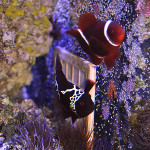
The lightning maroon clownfish finally spawned!!!
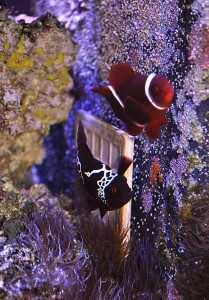
By: Matt Pedersen
Yes you read right. Matt Pedersen little “doubling down“ trick to get them to spawn that we wrote about here seems to have worked and the lightning maroon clownfish has finally spawned after 2 years of trying. This is very good news for all those who hope to keep these stunning fish one day, myself included.
Matt has been trying to get them to breed for two years now pairing it with a number of other maroon clownfish of both sexes. Finally it paired with a smaller maroon clownfish and this morning matt could finally report that they had spawned for the first time. (read the full story here.) It is a bit early to get too excited since it is common for the first spawns to fail and to produce where few fertile eggs but once a clownfish pair start to spawn they usually continue doing so. Matt should hopefully soon have a number of lightning clowns to breed from and pass on to other successfully breeders so that they can help this clown fish become more available. This clownfish really deserves to become a common sight in aquariums around the worlds and the chances of that happening greatly increased today.
Until today only two lightning maroon clownfish was ever caught, both in the waters of Papua New Guinea. Just a few weeks ago a third fish was caught in the same waters that resembles the lightning maroons but with a much less distinct pattern. See the image below. This latest catch was aquired by EcoReef UK
